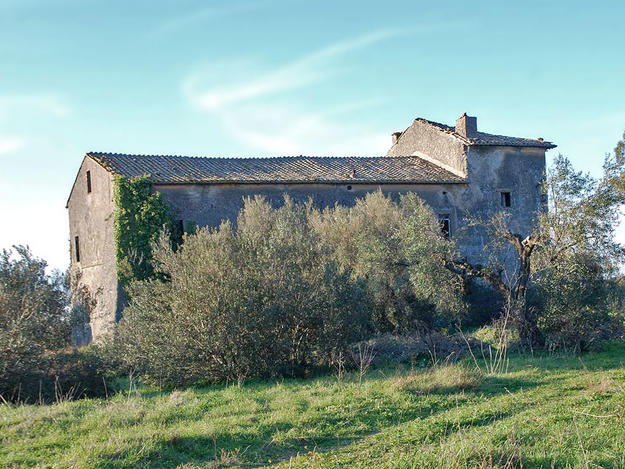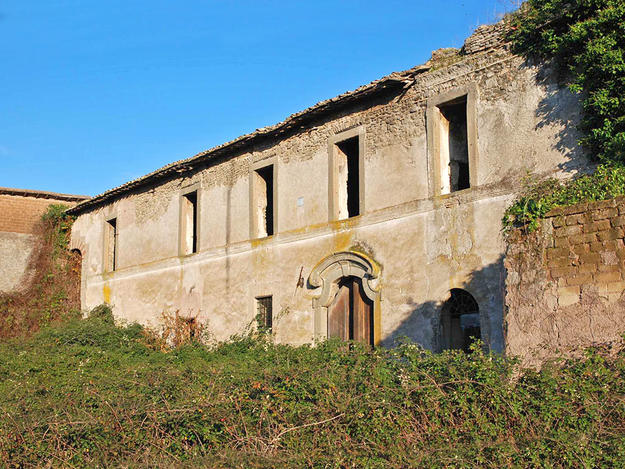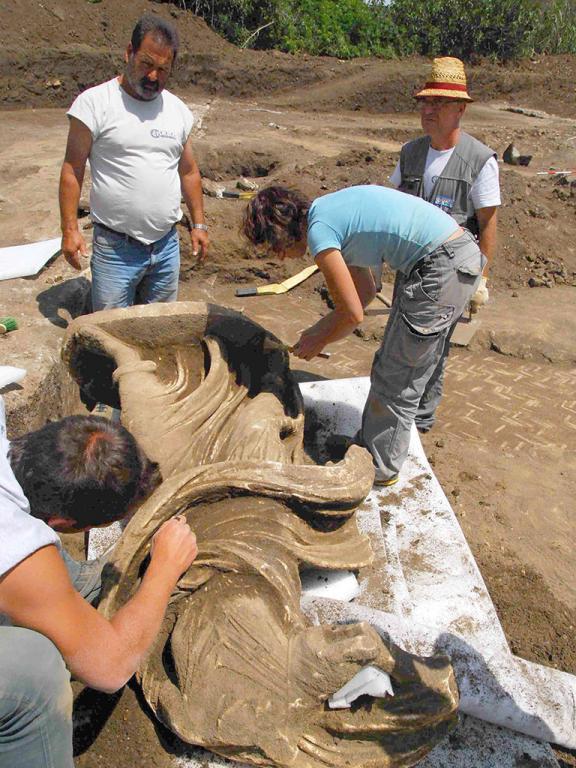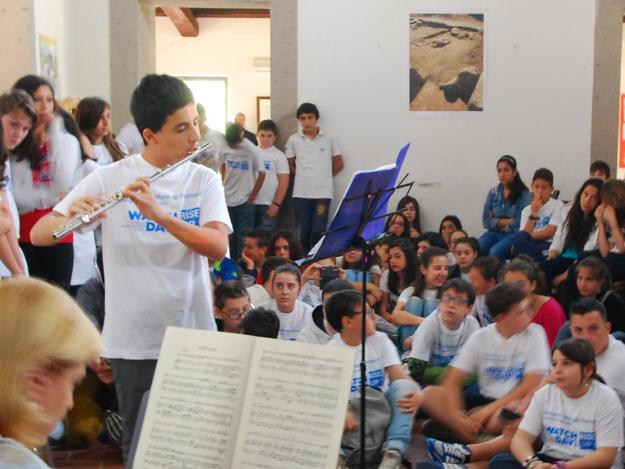Muro dei Francesi
2014 World Monuments Watch
Muro dei Francesi is a little-known jewel steeped in history near the town of Ciampino on the outskirts of Rome. Though it dates to Roman times, Muro dei Francesi’s name derives from a 1379 battle in which condotierre Alberico da Barbiano, who supported Pope Urban VI, effectively ended the Avignon Papacy by defeating the French troops that backed Clement VII.
In the seventeenth century a country estate was constructed at the site by the prominent Colonna family consisting of olive groves, vineyards and two farmhouses. A famous baroque portal designed by the architect Girolamo Rainaldi survived until 2011, when it collapsed due to structural deterioration. In the years before the site was included on the 2014 World Monuments Watch, archaeologists unearthed what they believed to be the remains of a villa that belonged to Marcus Valerius Messalla Corvinus, a Roman general, author, and patron of the arts who lived in the second half of the first century B.C. Some of the most impressive finds included a natatio, or outdoor swimming pool, and sculptures of the Niobids. The Niobids were the children of Niobe and Amphion, who were killed by Apollo and Diana in a myth about the rivalry between gods and mortals. The myth inspired Ovid, Messalla's contemporary, and is recounted in the Metamorphoses.
Thanks to the wall that surrounds the seventeenth-century estate, Muro dei Francesi retains its historic countryside character. But the densely populated city of Ciampino is growing, and the municipality plans to build new public housing near the archaeological area. The discovery of the villa of Messalla took place during construction and temporarily halted the project, and in June 2013 some limits were imposed on construction near the site. Citizens of Ciampino formed an association for the protection of the city's heritage and started a public education campaign to highlight the benefits of protecting Muro dei Francesi for the community. The site was included on the 2014 Watch in order to encourage its integrated management and to ensure its long-term preservation.
Watch Day
In May 2014, Watch Day participants enjoyed guided tours and educational activities at Muro dei Francesi. Guests attended presentations about the site and an exhibition of local student work displaying its possible future uses.
Since the Watch
Following the announcement of the 2014 Watch, local advocates mounted a broad awareness-raising campaign that included a public seminar and educational activities in cooperation with local schools. In 2014 the municipality of Ciampino asked the regional administrative authority to rescind the construction ban imposed by the Lazio Superintendency, and in October of that year the authority found the ban to be incorrectly formulated. A new, comprehensive ban was issued in July 2015 that included the entirety of Muro dei Francesi. Meanwhile, the Italian government provided an emergency grant of €40,000 for the restoration of the collapsed baroque portal, which has since been protected and analyzed in a conservation study. The government allocated another €150,000 for the conservation of ancient statues. In March 2016 the nominators held a public forum in order to discuss the possibility of acquiring the land for public use.




